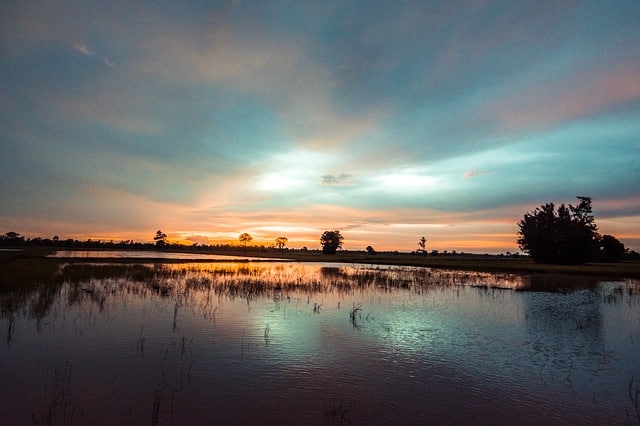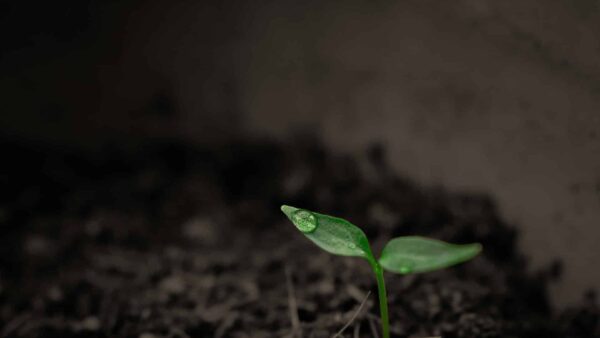How FAO is helping farmers and rural people in some of the planet’s most pressing humanitarian crises
Many people equate FAO to a knowledge centre or technical agency, the provider of statistics and world reports on issues such as food insecurity, biodiversity and deforestation. So it can come as a surprise when they learn that when conflict, extreme weather events, natural disasters, plants pests, animal diseases or other threats devastate livelihoods and push people into hunger, FAO is on the ground to help — from the earliest days of the response. By providing seeds, fishing gear, animal vaccines or other assets, FAO works to rebuild livelihoods and local food systems to support the self-reliance of those affected and boost their resilience against future threats. All told, in 2018, the Organization assisted some 25 million people in 70 countries.
Of course, FAO places great emphasis on early warning and risk reduction, working with families, communities and local and national governments before trouble hits so that vulnerable people are better able to avoid or withstand shocks in the first place. However, if and when threats do strike, FAO is there.
Here are three ways FAO is on the ground helping vulnerable, farming-, fishing- and forest-reliant people prepare for the worst and bounce back after shocks hit.
1. Anticipating and preparing for crises
FAO works with governments and other partners to weave together existing information into a globe-spanning early warning, early action report that raises red flags at signs of trouble, like impending drought, and then promotes preventative actions.
In 2017-18, when forecasts pointed to yet another drought in southern Madagascar – a region already hit by cumulative dry spells that resulted in three failed agricultural seasons – these systems allowed FAO to act early, before the drought could destroy yet another harvest.
The Organization supported people, 23-year-old farmer Zarafonomeny as one example, with short-cycle seeds – including groundnuts and vegetable – so that they could cope with the impending drought.
That same year, in the Mongolian steppe, forecasts pointed toward the occurrence of a localized weather pattern called a dzud. This phenomenon occurs when a summer of very high temperatures and little rainfall is followed by the harshest of winters.
Dzuds result in large numbers of livestock dying from either starvation or cold; this wreaks havoc on the livelihoods of vulnerable herders who can be forced to take out high-interest loans to survive. Ganbaatar Sodnom-ish was among those supported by FAO. When all was said and done, the provisioned food and nutrients meant that Sodnom-ish wasn’t forced to borrow more money to keep his herds alive. He and his family were able to stay on the steppe and are prospering.
2. Responding fast and at scale
In 2018, FAO received over $600 million from the international donor community to support its resilience strategic program, including early warning, disaster risk reduction, prevention and emergency response and rehabilitation activities. This allowed the Organization to implement large-scale interventions in some of the world’s most acute hunger crises of 2018 — and most challenging operational environments.
For example, in Yemen, FAO reached over 3 million vulnerable people through a mixture of crop and vegetable seeds, fishing gear, poultry production kits, cash support, animal health campaigns, restocking and animal feed, as well as value chain development. Despite significant access constraints, FAO’s animal vaccination and treatment campaigns in Yemen reached over 2.4 million livestock who provide Yemeni families with a critical source of daily food.
Indeed, safeguarding livestock assets is another major component of FAO’s emergency response.
In many poor countries, livestock are people’s most important possessions. Not only do they provide milk for daily sustenance, they are high-value assets that can be used as collateral or bartered for food or other essentials.
But malnourished animals affected by droughts, floods or disease do not produce as much milk, reducing their worth in trade. Even minor illnesses can kill already weakened livestock. In 2018, FAO animal health campaigns in crises treated 60 million animals. A single animal can provide income or food from three to six people and play a critical role in reducing child malnutrition; therefore, the ripple effects of animal health interventions travel far.
3. Reducing risks and addressing vulnerabilities
Disasters and crises do not just have immediate effects on people’s lives, they can destroy livelihoods that have taken generations to build.
FAO promotes proactive risk management and disaster risk reduction (DRR) measures to help countries and communities address underlying fragilities so that when shocks do happen, their impacts are reduced and mitigated.
One example of DRR is conservation agriculture or the use of drought-tolerant seeds. When farmers apply DRR best practices, they are not only able to withstand shocks, but often see improved returns even during normal conditions.
Increasing women’s involvement in agriculture and food production is another way to reduce a family’s vulnerability and increase their resilience, as women are typically responsible for household food security and nutrition in most developing countries. This involvement can also provide a supplemental, or only, source of income.
Mouna Yasser, a 30-year-old mother of two from the Homs Governorate in Syria, had to rely on the financial support of extended family and neighbours when her family lost their only source of income. In 2018, addressing this all-too- common situation, FAO trained 1 210 women on food production and post-harvest handling and gave them agricultural inputs such as seasonal vegetables seeds, modern irrigation equipment and poultry production inputs. Mouna received 45 hens, five roosters, as well as training.
“I am now taking care of my children and feed them with daily fresh eggs…. I will be able to sell the eggs to the market to support my family with a good income,” she says.
Saving Livelihoods Saves Lives, 2018 reflects on FAO’s efforts to empower rural people across the planet, helping them — even in the direst of circumstances – to remain self-reliant and keep themselves and their communities better fed, building a #ZeroHunger future.
Source: FAO










